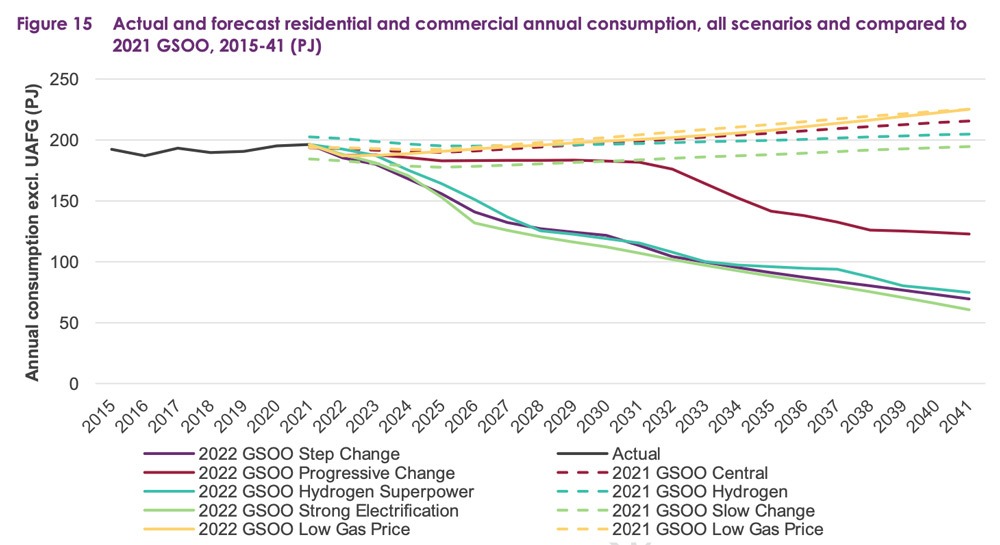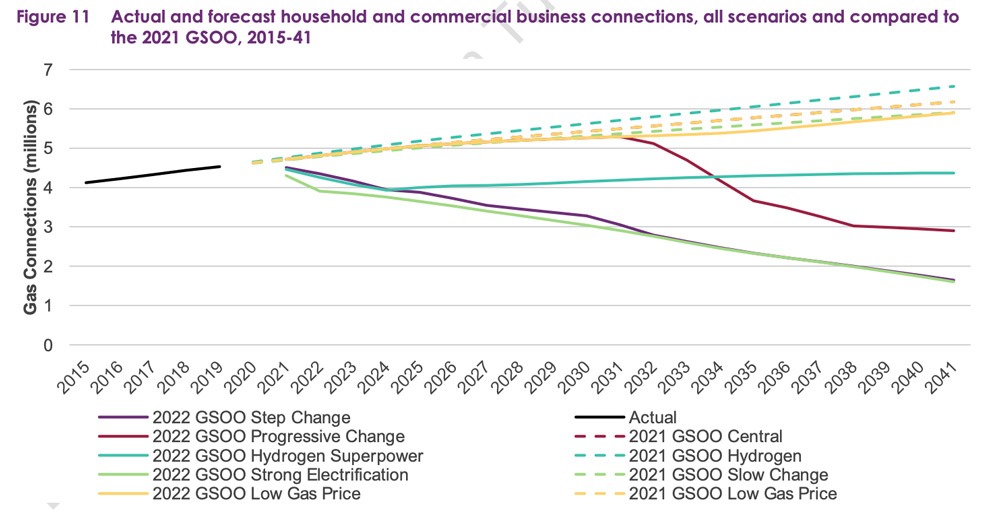The Australian Energy Market Operator says cutting gas consumption by accelerating a switch to renewable energy, and promoting further electrification of energy use could be the most effective ways to manage potential shortfalls in gas supply.
In the latest iteration of its Gas Statement of Opportunities (GSOO) released Tuesday, AEMO also appears to puncture the federal Coalition claims of a “gas-fired recovery”, and has made a significant downward revision of its gas demand projects.
The report also finds that domestic markets are expected to have access to sufficient supplies of gas until at least 2033, contrary to industry predictions of a shortfall, thanks to the accelerated uptake of renewables, the electrification of energy use and energy efficiency measures.
Such is the extent of the energy transformation underway in Australia that AEMO now says that under several scenarios that demand is likely to decline over the next decade as households and businesses make the switch away from gas.

This is particularly true of the “step change” scenario in its Integrated System Plan which is now considered by the majority of energy industry stakeholders to be the most likely outcome.
The GSOO forecast says the number of customer connections to the country’s gas network is likely to fall from a current level of 4.4 million in 2022 to just 1.6 million in 2041 under the Step Change scenario.
AEMO has prepared energy forecasts based on a range of renewable energy uptake rates. While the ‘step change’ scenario was seen as ambitious when it was first published in 2020, it was effectively adopted as the ‘baseline’ scenario in subsequent forecasts.

The report stands in contrast with the claims of federal energy minister Angus Taylor, who has stoked fears of a ‘European style’ gas shortage, and who has overseen significant amounts of taxpayer funds being channelled into the gas industry as part of the Morrison government’s “gas led recovery”.
Australia produces substantially more gas than is used locally, with the bulk of Australia’s production sold into export markets.
With gas producers locking themselves into export contracts, any shortfall within Australia can be attributed to gas producers seeking to fulfil these contracts rather than supplying Australian consumers.
AEMO pointed to gas peaking generators, which operate during periods of high electricity prices, as having significant potential to place stress on gas supplies, particular during winter periods when household and business consumption increases as the need for heating increases.
The Morrison government has committed $600 million to construct a new gas-fired generator at Kurri Kurri that is likely to only ever operate as a peaking generator, the type of plant AEMO says may need to be curtailed.
AEMO’s report indicates that such plants could become the main avoidable burden on domestic gas supplies and suggested that the curtailment or replacement of fossil gas use for peaking generation could be an effective way to manage any potential shortfall.
“Curtailment of gas generation is a key mechanism available to avoid peak day gas supply shortfalls. Some gas generators have dual-fuel capability so they can generate electricity even if they are subject to gas curtailment,” the 2022 GSOO says.
“If gas generation drew less gas than forecast, and was actively managed at times of peak gas demand, the forecast gas shortfalls during extreme conditions may be avoidable without compromising electricity reliability, but adequacy would be tight.”
AEMO’s executive general manager, Merryn York, said predicting Australia’s future gas consumption was tricky as it waited to see how the emergence of new technologies and alternative energy sources might impact the gas market.
“Under AEMO’s scenarios, there is uncertainty about future demand for and supply of natural gas as the market identifies pathways to decarbonise and users look to alternative fuels, like hydrogen or electricity, for industrial processes, manufacturing, heating, and cooking,” York said.
Despite the uncertainty, AEMO said that local gas supply shortfalls would only occur under “extreme conditions” when demand reaches extreme highs and households and businesses find themselves competing with gas generators for limited supplies.
York said that reducing the amount of gas used for electricity generation could be the most effective way to mitigate the threat of any supply shortfalls, particularly in the short term, given the lag time in the development of new gas projects.
“Investments, such as the Port Kembla Energy Terminal, Golden Beach production facility and duplication of the Winchelsea compressor on the South West Pipeline, will help but are unlikely to be operating until after winter 2023,” York said.
“This leaves reducing electricity generation from gas as the likely solution to manage shortfalls, unless actions identified in the ‘step change’ scenario, like switching from gas to electricity for residential heating and hot water, are taken quickly.”








